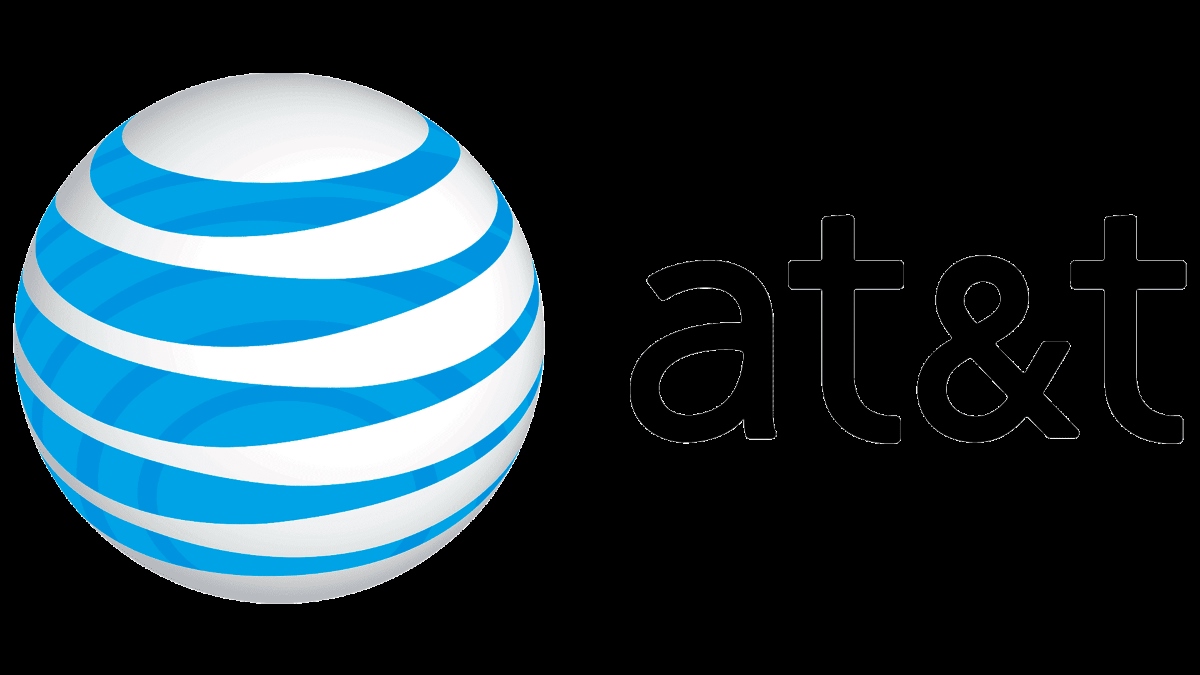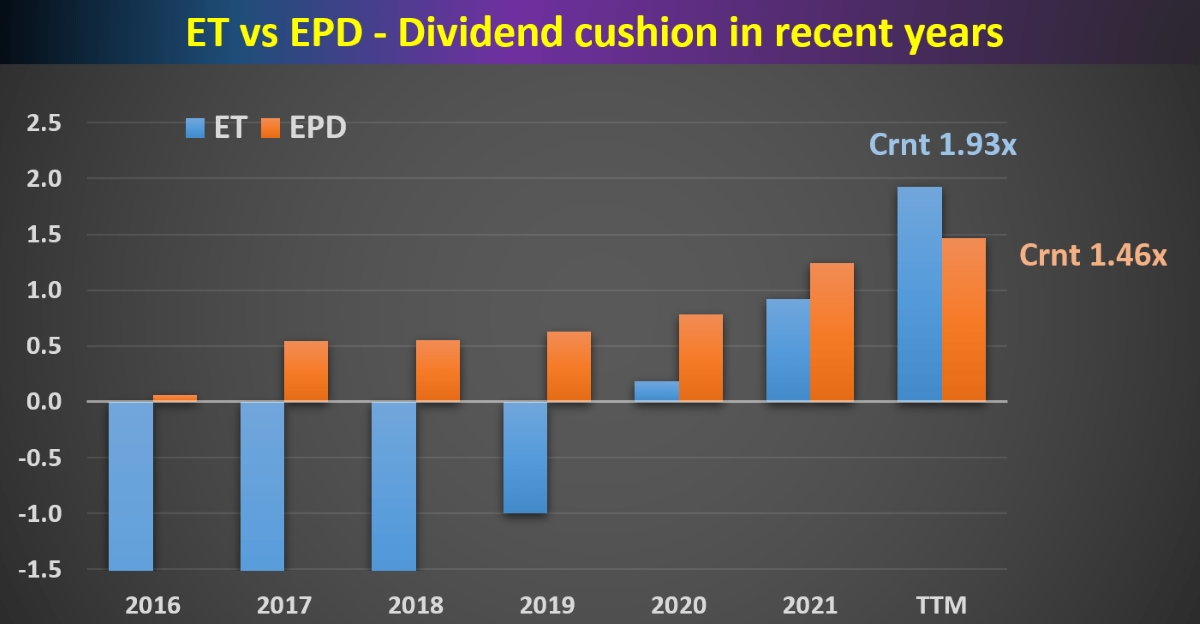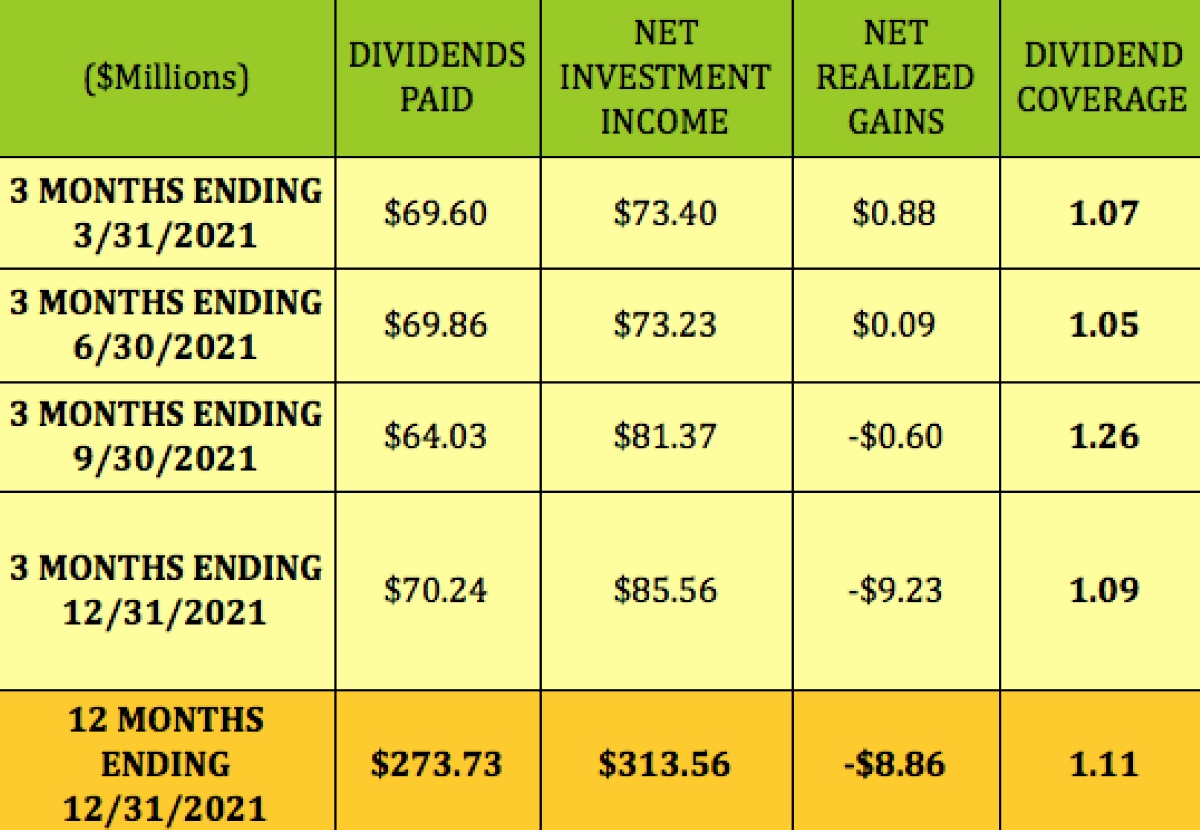

Finance
When Does AT&T Pay Dividends?
Published: January 3, 2024
Discover when AT&T pays dividends and how it can impact your finances. Stay informed about dividend payments from AT&T as a potential investment strategy.
(Many of the links in this article redirect to a specific reviewed product. Your purchase of these products through affiliate links helps to generate commission for LiveWell, at no extra cost. Learn more)
Table of Contents
Introduction
Dividends play a crucial role in the world of finance, providing investors with a steady stream of income from their investments. For those looking to invest in stocks, dividends can be a significant factor to consider. This article will focus specifically on AT&T, one of the largest telecommunications companies in the world, and its dividend payment schedule.
AT&T has a long history of paying dividends to its shareholders. Established in 1885, the company has grown to become a powerhouse in the telecommunications industry, offering services such as mobile, broadband, and TV to millions of customers worldwide. Investors in AT&T have the potential to earn not only through the company’s stock price appreciation but also through regular dividend payments.
Understanding how dividends work and when they are paid is essential for investors. The dividend payment schedule is a crucial aspect that investors should consider when assessing the attractiveness of an investment. In the case of AT&T, the dividend schedule is subject to change based on various factors, such as company performance, cash flow, and management decisions.
In this article, we will delve into the specifics of AT&T’s dividend payments, including dividend dates, ex-dividend date, record date, payment date, and dividend yield. We will also explore the factors that can potentially impact AT&T’s dividend payments, helping investors make informed decisions about their investments.
Whether you are a current shareholder of AT&T or considering investing in the company, understanding when AT&T pays dividends is crucial to your investment strategy. So, let’s dive into the details of AT&T’s dividend payment schedule and gain insights into this critical aspect of investing.
Understanding Dividends
Before diving into AT&T’s dividend payment schedule, let’s start by understanding the concept of dividends themselves. Dividends are a portion of a company’s profits that are distributed to its shareholders as a way to reward them for their investment. Typically, companies that generate consistent profits and have a stable financial position are more likely to pay regular dividends.
Dividends can be a source of income for investors, providing them with a steady stream of cash flow from their investments. This regular income can be particularly attractive to income-focused investors who rely on dividend payments to meet their financial goals.
Companies have the flexibility to determine the dividend payout ratio, which is the percentage of earnings that is distributed as dividends. It is important to note that companies are not obligated to pay dividends. Some companies choose to reinvest their profits back into the business to finance growth opportunities or pay down debt instead of distributing dividends.
Dividends are typically paid in the form of cash, but some companies may also offer dividends in the form of additional shares of stock. This is known as a stock dividend, and it allows shareholders to increase their ownership stake in the company without using additional funds.
Investors often consider the dividend yield when evaluating the attractiveness of a stock’s dividend. The dividend yield is calculated by dividing the annual dividend per share by the stock’s current market price. It represents the return on investment that an investor can expect to receive from dividends alone, without factoring in any potential changes in the stock price.
Now that we have a basic understanding of dividends, let’s explore AT&T’s dividend payment schedule and how it impacts investors.
AT&T Dividend Payment Schedule
AT&T has a long-standing track record of paying dividends to its shareholders. The company understands the importance of providing a consistent and reliable income stream to its investors. The dividend payment schedule for AT&T is outlined below:
- Dividend Dates: Dividend dates are key milestones in the dividend payment process. These dates include the ex-dividend date, the record date, and the payment date. They help determine who is eligible to receive the dividend and when it will be paid.
- Ex-Dividend Date: The ex-dividend date is the date on which a stock starts trading without the right to receive the upcoming dividend payment. If an investor wants to be eligible for the dividend, they must purchase the stock before the ex-dividend date. Conversely, if an investor purchases the stock on or after the ex-dividend date, they will not be entitled to the dividend for that payment period. It’s important to consider the ex-dividend date when planning an investment strategy to ensure you meet the eligibility criteria.
- Record Date: The record date is the cut-off date established by the company to determine which shareholders are entitled to receive the dividend payment. If you hold shares of AT&T on the record date, you will receive the dividend, regardless of whether you bought the shares before or after the ex-dividend date. The record date is usually a few days after the ex-dividend date.
- Payment Date: The payment date is the date on which the dividend is actually distributed to eligible shareholders. AT&T typically pays dividends on a quarterly basis, meaning shareholders can expect to receive dividend payments every three months. The payment date is a significant moment for shareholders as they receive the expected income from their investment.
It’s important to note that the dividend payment schedule may be subject to change based on various factors, including the company’s financial performance, cash flow, and management decisions. Investors should stay informed and keep an eye on any announcements or updates regarding changes to the dividend payment schedule.
Now, let’s take a closer look at how the ex-dividend date, record date, and payment date work together in determining when AT&T pays dividends.
Dividend Dates
In order to better understand when AT&T pays dividends, it is important to familiarize oneself with the three key dividend dates: the ex-dividend date, the record date, and the payment date. These dates play a crucial role in determining who is eligible to receive the dividend and when it will be paid.
- Ex-Dividend Date: The ex-dividend date is a significant date for investors. It is the date on which a stock begins trading without the right to receive the upcoming dividend payment. If an investor wishes to be eligible to receive the dividend, they must purchase the stock before the ex-dividend date. Conversely, if an investor purchases the stock on or after the ex-dividend date, they will not be entitled to the dividend for that payment period. It is worth noting that stock prices often adjust on the ex-dividend date to account for the dividend payment, so investors should consider this when making investment decisions.
- Record Date: The record date, also known as the ownership date, is the date on which a company reviews its shareholder records to determine who is eligible to receive the dividend payment. If you hold shares of AT&T on the record date, you will receive the dividend, regardless of whether you bought the shares before or after the ex-dividend date. Typically, the record date is set a few days after the ex-dividend date.
- Payment Date: The payment date is the date on which the dividend is distributed to eligible shareholders. For AT&T, dividend payments are typically made on a quarterly basis. This means that shareholders can expect to receive dividend payments every three months. The payment date is an eagerly anticipated day for investors, as it represents the realization of the expected income from their investment.
It is important for investors to keep these dividend dates in mind when considering an investment in AT&T. By understanding the ex-dividend date, record date, and payment date, investors can plan their investment strategy accordingly and ensure they meet the eligibility criteria to receive dividend payments.
Now that we have explored the dividend dates, let’s delve deeper into the significance of the ex-dividend date in determining dividend eligibility.
Ex-Dividend Date
The ex-dividend date is a pivotal date for investors and plays a crucial role in determining dividend eligibility. It is the date on which a stock begins trading without the right to receive the upcoming dividend payment. To be eligible for the dividend, investors must purchase the stock before the ex-dividend date.
When a company announces a dividend, it will also declare an ex-dividend date. Any investor who buys shares of the company before this date will be entitled to receive the upcoming dividend payment. However, if the shares are purchased on or after the ex-dividend date, the buyer will not receive the dividend for that particular payment period.
The reason behind the ex-dividend date is that stock transactions take time to settle. Typically, it takes two business days for stock transactions to be completed. So, the ex-dividend date is set two business days before the record date. This ensures that only the shareholders on the record date, as reflected in the company’s shareholder records, are eligible to receive the dividend.
It is also important to note that stock prices often adjust on the ex-dividend date to account for the dividend payment. Generally, the price of a stock will decrease by an amount equivalent to the dividend payment once it begins trading ex-dividend. This adjustment occurs because investors buying the stock on or after the ex-dividend date will not receive the imminent dividend payment. Thus, the stock price may reflect this reduction in value.
For example, if AT&T announces a dividend of $0.50 per share and sets the ex-dividend date as April 1st, an investor who purchases AT&T shares on March 31st or earlier will be eligible to receive the dividend payment. However, an investor who purchases shares on or after April 1st will not be entitled to the dividend payment for that specific quarter.
As an investor, it is crucial to be aware of the ex-dividend date when planning your investment strategy. Timing your purchases before the ex-dividend date can allow you to take advantage of the upcoming dividend payment. However, it is essential to consider other factors, such as the company’s financial performance and outlook, in addition to dividend payments, when making investment decisions.
Now that we understand the significance of the ex-dividend date, let’s explore the next important dividend date, the record date.
Record Date
The record date, also known as the ownership date, is a significant date in the dividend payment process. It is the date established by the company to determine which shareholders are eligible to receive the dividend payment.
Once the ex-dividend date has passed, the company reviews its shareholder records on the record date to identify the shareholders who are entitled to receive the dividend. If an investor holds shares of AT&T on the record date, regardless of whether they purchased the shares before or after the ex-dividend date, they will receive the dividend payment.
The record date is typically set a few days after the ex-dividend date. This lag allows for the processing and settlement of stock transactions that occurred before the ex-dividend date. Since stock transactions take time to clear, the record date serves as a cut-off date to determine the shareholders of record who will receive the dividend.
It’s worth noting that the record date is not the same as the ex-dividend date. The ex-dividend date is focused on determining who is eligible to purchase the stock and still receive the dividend, while the record date is concerned with establishing the ownership of shares for dividend distribution.
For example, suppose AT&T declares a dividend with an ex-dividend date of April 1st and a record date of April 5th. If an investor purchases AT&T shares on March 31st or earlier, they will be eligible to receive the dividend, as they will be recorded as a shareholder on the record date of April 5th.
It’s important for investors to be aware of the record date when planning their investment strategy. If you wish to receive the dividend, you must ensure that you hold the shares before the record date, regardless of whether you purchased them before or after the ex-dividend date.
However, it’s crucial to note that the record date is not relevant to new investors purchasing the stock after the ex-dividend date. These new investors will have to wait until the next dividend announcement and ex-dividend date to become eligible for the dividend payment.
Now that we have gained an understanding of the record date, let’s move on to the final dividend date, the payment date.
Payment Date
The payment date is the most eagerly anticipated date for investors as it marks the day on which the dividend is distributed to eligible shareholders. For AT&T, dividend payments are typically made on a quarterly basis.
After the ex-dividend date and record date have passed, and the company has verified the eligible shareholders, the dividend payment is processed and distributed on the payment date. This is when investors receive the expected income from their investment in the form of cash.
AT&T, like many other companies, generally pays dividends through various means, such as direct deposit into shareholders’ brokerage accounts or through physical checks sent to their registered address. Shareholders should ensure that their contact and banking information is up to date to avoid any delays or issues with receiving their dividend payments.
It’s important to note that the payment date may not be the same for every dividend payment or every company. The specific payment dates for AT&T dividends can be found in the company’s dividend announcements or by referring to reliable financial news sources.
As an investor, it is crucial to keep track of the payment dates for dividends to monitor your cash flow and plan your finances effectively. These regular dividend payments can be a valuable source of income and play a significant role in achieving your financial goals and objectives.
It’s worth mentioning that the payment date is typically a few weeks after the record date to allow ample time for processing and distributing the dividend payments to all eligible shareholders. The exact timeline may vary depending on the company’s internal processes and the method of payment used.
Now that we have covered the payment date and understood its importance, let’s take a moment to recap the key points we’ve discussed regarding AT&T’s dividend payment schedule.
Dividend Yield
When considering an investment in a dividend-paying stock like AT&T, one important metric to assess is the dividend yield. Dividend yield is a measure of the annualized dividend payout relative to the current market price of the stock.
To calculate the dividend yield, divide the annual dividend payment by the stock’s current market price. The result is expressed as a percentage, representing the return on investment that an investor could potentially earn from dividends alone.
For example, if AT&T pays an annual dividend of $2 per share and the stock is currently trading at $40, the dividend yield would be calculated as follows:
Dividend Yield = ($2 dividend per share / $40 stock price) x 100% = 5%
The dividend yield helps investors evaluate the income potential of a stock’s dividends compared to its market price. It indicates how much cash flow they can expect to receive from their investment in the form of dividends.
A higher dividend yield may be appealing to income-focused investors seeking regular income from their investments. However, it’s important to consider various factors when interpreting the dividend yield. A very high dividend yield could be a sign that the market has priced in negative expectations for the company’s future growth or that the current dividend payment is unsustainable.
Conversely, a low dividend yield doesn’t necessarily indicate a poor investment. It could simply mean that the stock’s market price has increased relative to its dividend payment, potentially reflecting positive market sentiment and expectations of future growth.
It’s essential to remember that the dividend yield is just one factor to consider when evaluating an investment. Investors should also assess the company’s financial health, dividend payment history, growth prospects, and overall investment objectives to make informed decisions.
By understanding and monitoring the dividend yield, investors can assess the income potential of their investment in AT&T and compare it to other investment opportunities in the market.
Now that we’ve discussed the dividend yield, let’s explore some of the factors that can potentially affect AT&T’s dividend payments.
Factors Affecting AT&T Dividends
AT&T’s ability to pay dividends is influenced by various factors, which investors should consider when assessing the sustainability and potential growth of the company’s dividend payments. Some key factors that can impact AT&T’s dividends include:
- Company Performance: The financial performance of AT&T is a critical factor in determining its ability to pay dividends. Factors such as revenue growth, profitability, and cash flow generation play a significant role in supporting consistent dividend payments. Investors should monitor AT&T’s financial statements and earnings reports to gain insights into the company’s performance and its impact on dividend sustainability.
- Industry and Market Conditions: AT&T operates in the telecommunications industry, which can be subject to rapid technological advancements and regulatory changes. Changes in the competitive landscape, consumer preferences, and industry trends can affect AT&T’s revenue and profitability, thereby impacting its dividend-paying capacity.
- Debt Levels and Financial Obligations: AT&T, like many large companies, may have debt obligations and financial commitments to meet. Higher debt levels and interest payments can put pressure on available cash flow, potentially impacting the company’s ability to sustain or increase dividend payments.
- Cash Flow: Cash flow is a crucial factor in determining a company’s dividend payments. Positive cash flow indicates that AT&T has sufficient funds to support its dividend obligations. Investors should analyze AT&T’s cash flow statements to assess the company’s cash generation capabilities.
- Management Decisions: AT&T’s management has discretion over dividend payments. They may decide to increase, decrease, or suspend dividends based on various factors, including strategic priorities, investment opportunities, and financial outlook. Understanding management’s approach to dividend policy is important for investors.
It’s important to note that these factors are dynamic and can change over time. Therefore, investors should regularly monitor AT&T’s performance, industry trends, and any updates from the company to stay informed about potential changes in dividend prospects.
When evaluating the sustainability and potential growth of AT&T’s dividends, it is advisable to conduct thorough research, analyze financial information, and consider the company’s long-term prospects. In addition to the factors mentioned above, investors should also assess the overall market conditions, regulatory environment, competitive landscape, and any other relevant factors that may impact AT&T’s business and dividend payments.
Understanding these factors can help investors make informed decisions about whether to invest in AT&T for its dividend income potential or to align with their broader investment goals and risk tolerance.
Now, let’s conclude our discussion on AT&T’s dividend payment schedule and the factors influencing its dividends.
Conclusion
Dividends are an important consideration for investors, providing a steady stream of income from their investments. AT&T, as one of the largest telecommunications companies in the world, offers investors the opportunity to earn not only through stock price appreciation but also through regular dividend payments.
Understanding AT&T’s dividend payment schedule is crucial for investors who rely on dividend income or seek to maximize their overall returns. Key dates such as the ex-dividend date, record date, and payment date play a significant role in determining dividend eligibility and when dividends will be distributed.
Investors should also be aware of the importance of factors such as company performance, industry and market conditions, debt levels, cash flow, and management decisions when assessing AT&T’s dividend sustainability and potential growth.
By considering these factors and staying informed about AT&T’s financial performance and market developments, investors can make more informed decisions about whether to invest in AT&T for its dividend income or as part of a broader investment strategy.
Remember, dividend investments should be evaluated in the context of your individual financial goals, risk tolerance, and investment horizon. It is recommended to consult with a financial advisor or do thorough research before making any investment decisions.
As with any investment, it is important to note that the information provided in this article is for informational purposes only and should not be considered as financial advice.
Now that you have a better understanding of AT&T’s dividend payment schedule and the factors affecting its dividends, you can assess the potential benefits and risks of investing in AT&T and make informed decisions about your investment portfolio.














